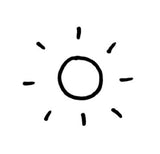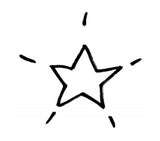How successful are bedwetting alarms?
Bedwetting alarms are recommended by the National Institute for Health and Care Excellence (NICE) as the first-line treatment for bedwetting in children aged 5-19. But why are alarms considered to be the best bedwetting treatment for children?
High Success
When children start wearing a bedwetting alarm, many experience their first dry nights in just a matter of weeks. The average time to reach 14 consecutive dry nights (which is when the bedwetting treatment is considered successful) with the alarm treatment is just 10.4 weeks (Cutting et al., 2007).

Low Relapse
Whilst other treatments may also reduce the number of wet nights during use, alarms differ in that their long-term success rates are outstanding and by far exceed other treatment options, such as medication (Caldwell et al., 2016). Because alarms target the root of the bedwetting problem, by helping a child form the link between their brain and bladder, the alarm treatment is able to achieve a lasting, permanent cure.
This means that alarms can be considered a lasting cure for bedwetting and children can “wake up knowing with certainty that they will be dry” (Cutting et al., 2007). In comparison, studies have been unable to find any “reliable evidence” that drugs are effective after treatment has stopped (Glazener, 2007).

Additional Benefits
As well as clearly being the most successful treatment for bedwetting, alarms do not come with the risk of harmful side-effects that other treatment options may pose. Additionally, alarms are cost-effective in the long-run, as the cost of an alarm is a one-off expense, that does not need to be supplemented in the future when dry nights are achieved.

Conclusion
So, alarms clearly have the greatest short-term AND long-term success of any bedwetting treatment available. The low relapse rate in particular is important as this reduces the concerns of going back to square one and starting treatments all over again. In conclusion, alarms are a cost-effective, safe, and reliable method for curing bedwetting in the short and long term. 
References
Caldwell et al. 2016. Tricyclic and related drugs for nocturnal enuresis in children. Cochrane Database of Systematic Reviews.
Cutting et al. 2007. Nocturnal enuresis: Application of evidence-based medicine in community practice. Journal of Paediatrics and Child Health, 43, 167-172.
Glazener et al. 2005/7. Alarm interventions for nocturnal enuresis in children. Cochrane Database of Systematic Reviews.
